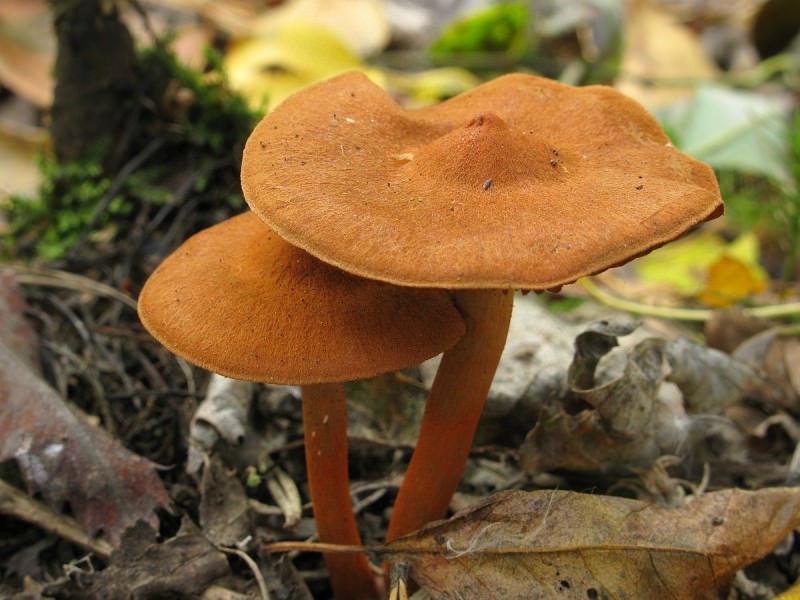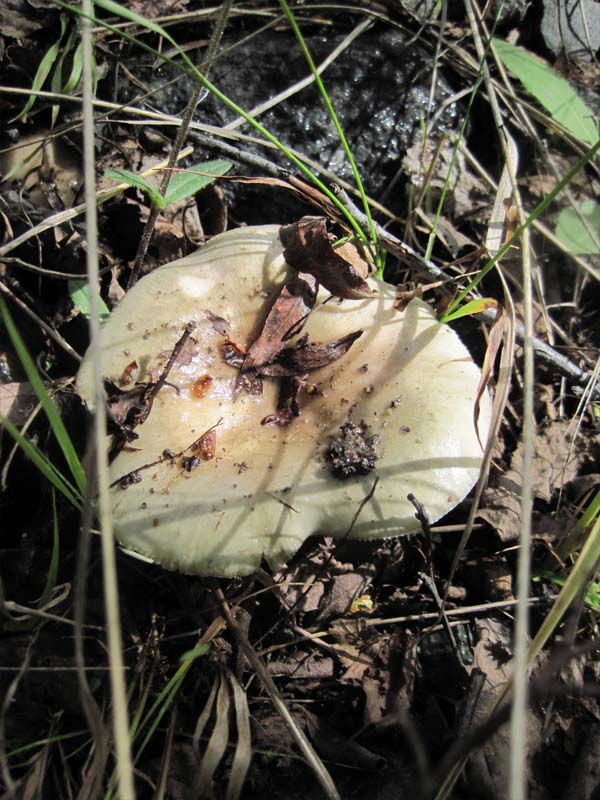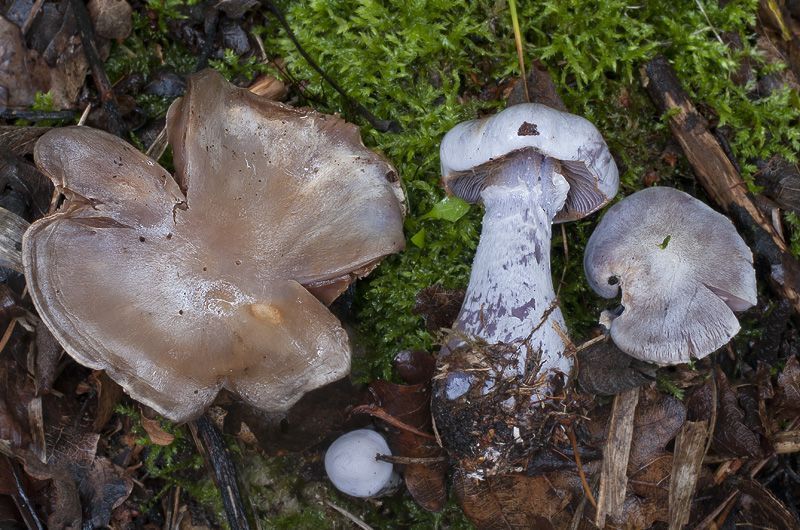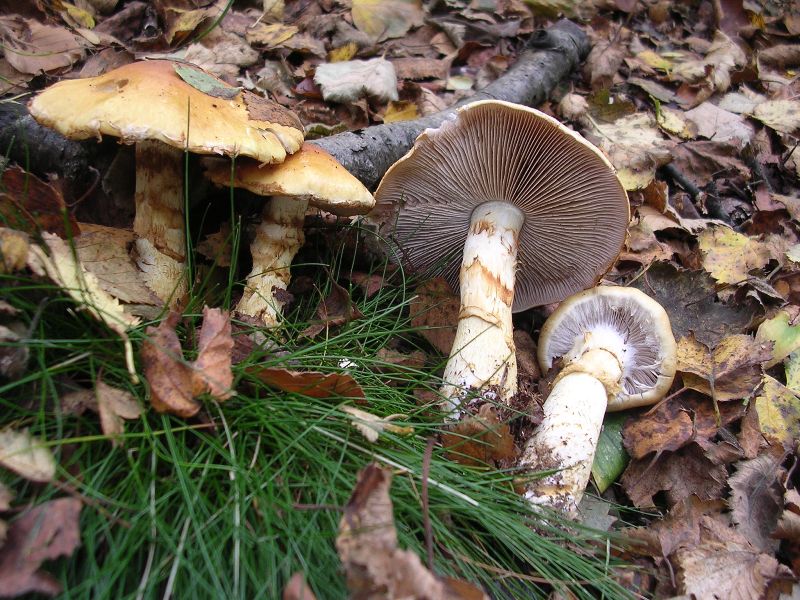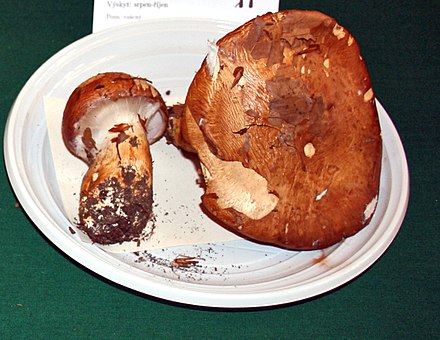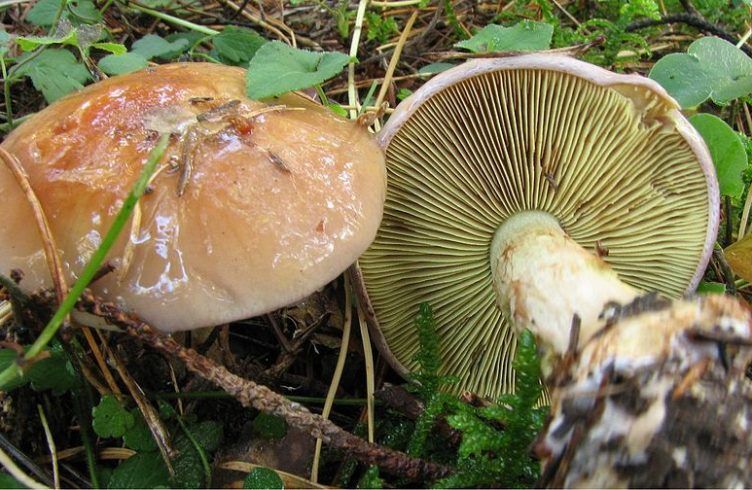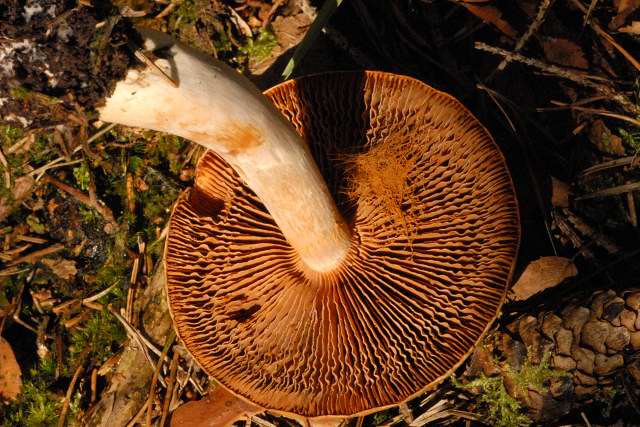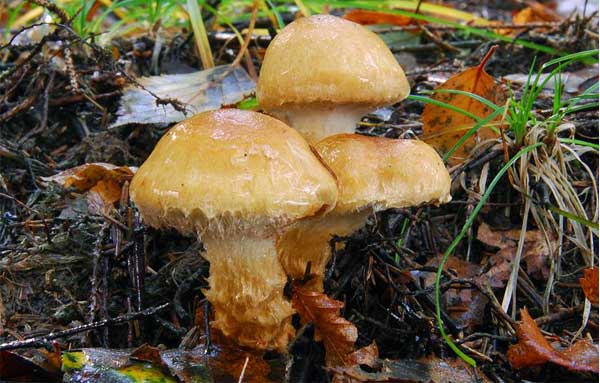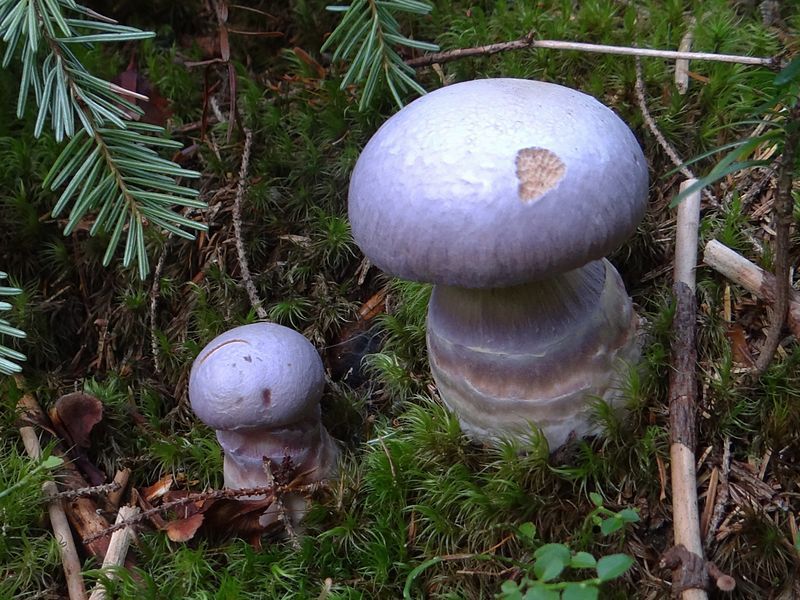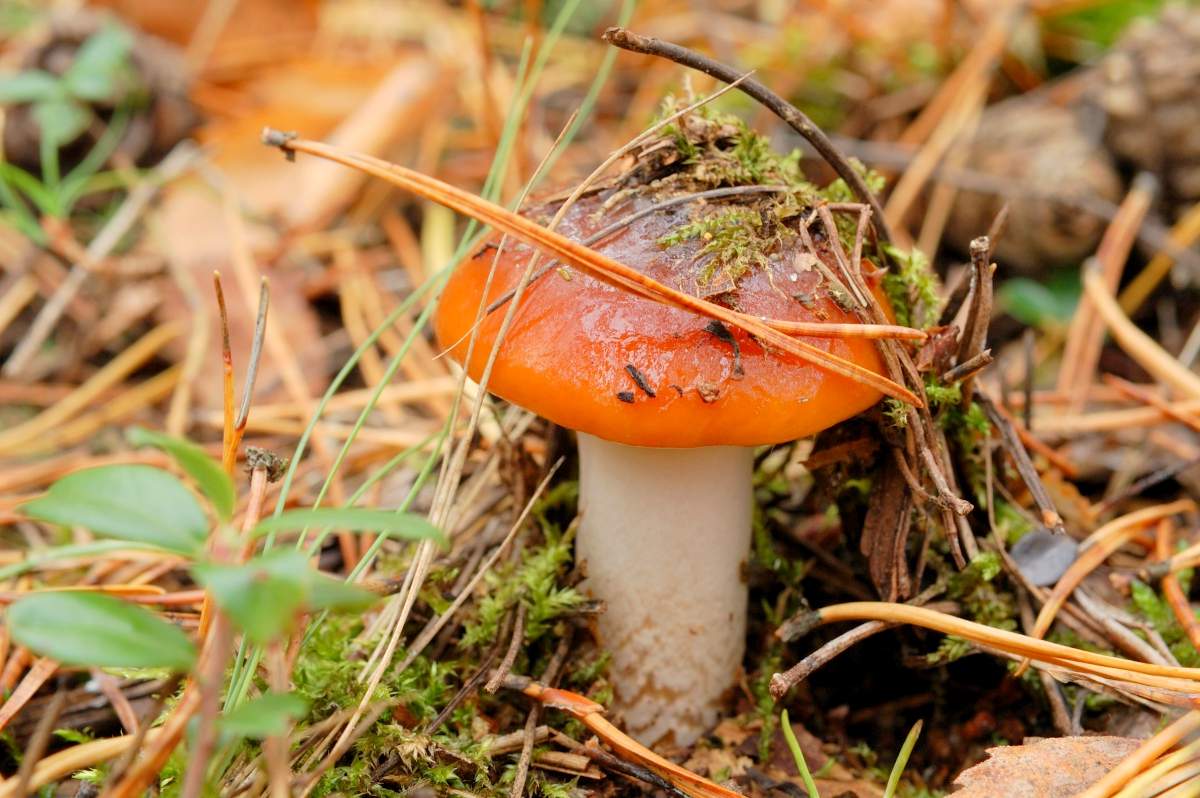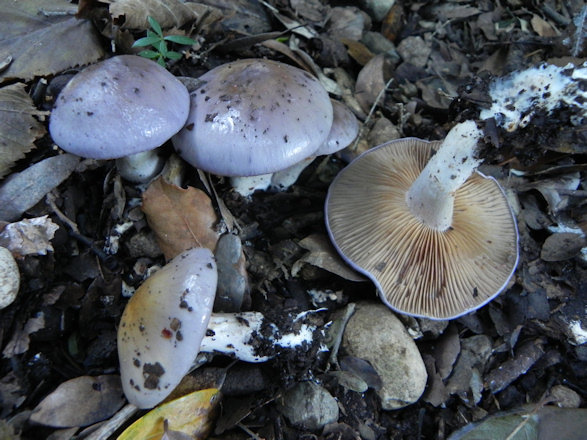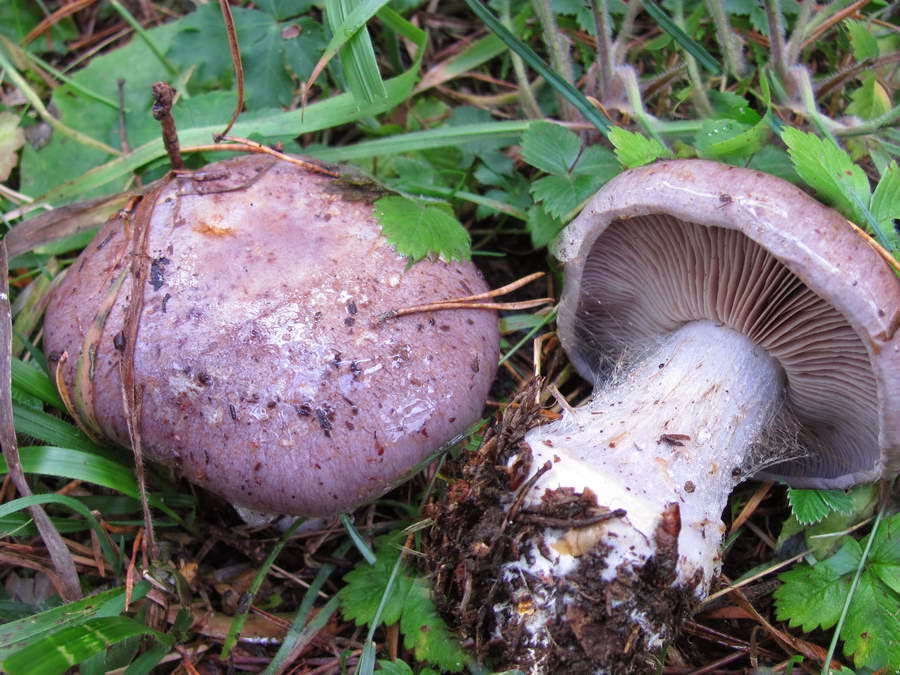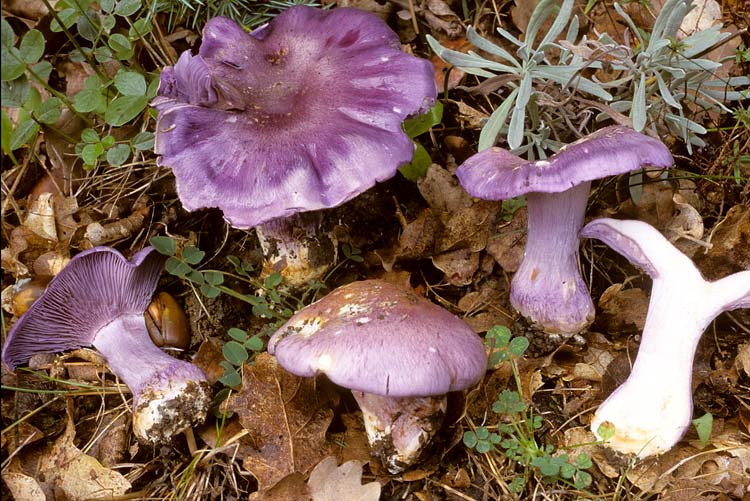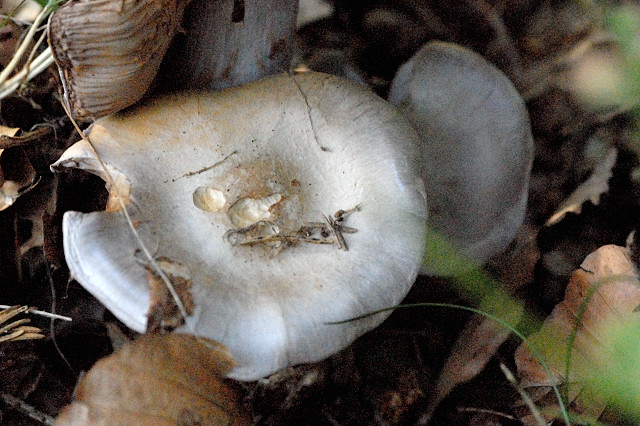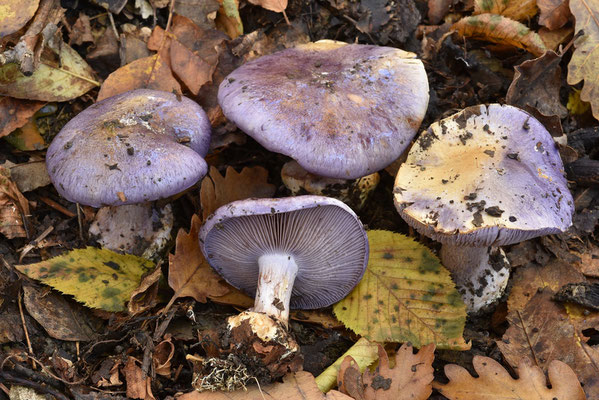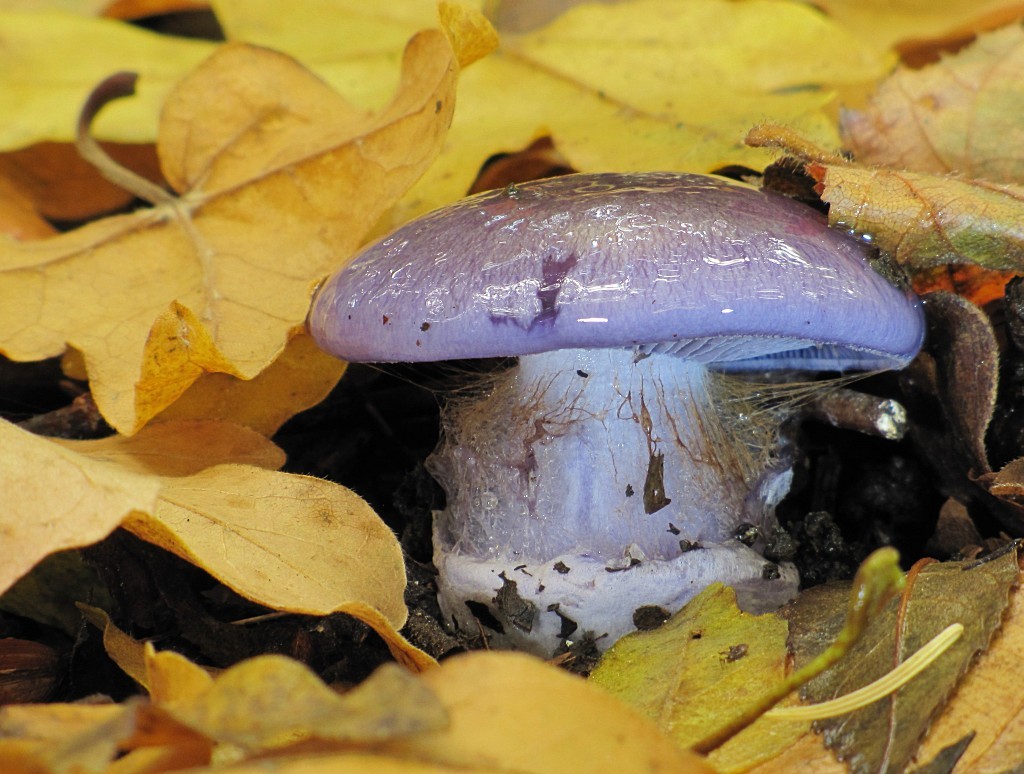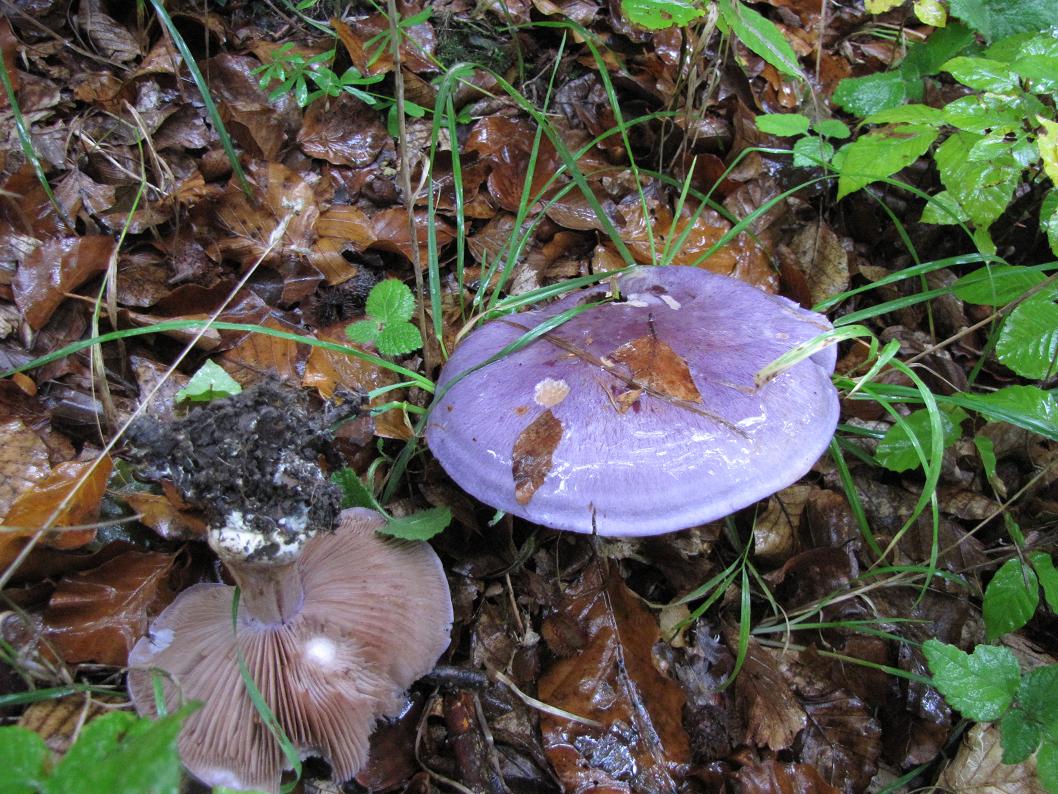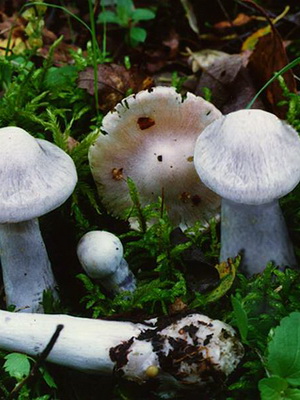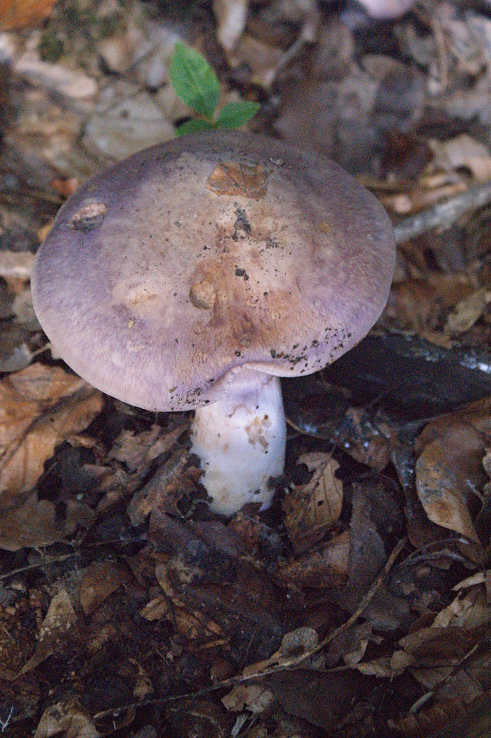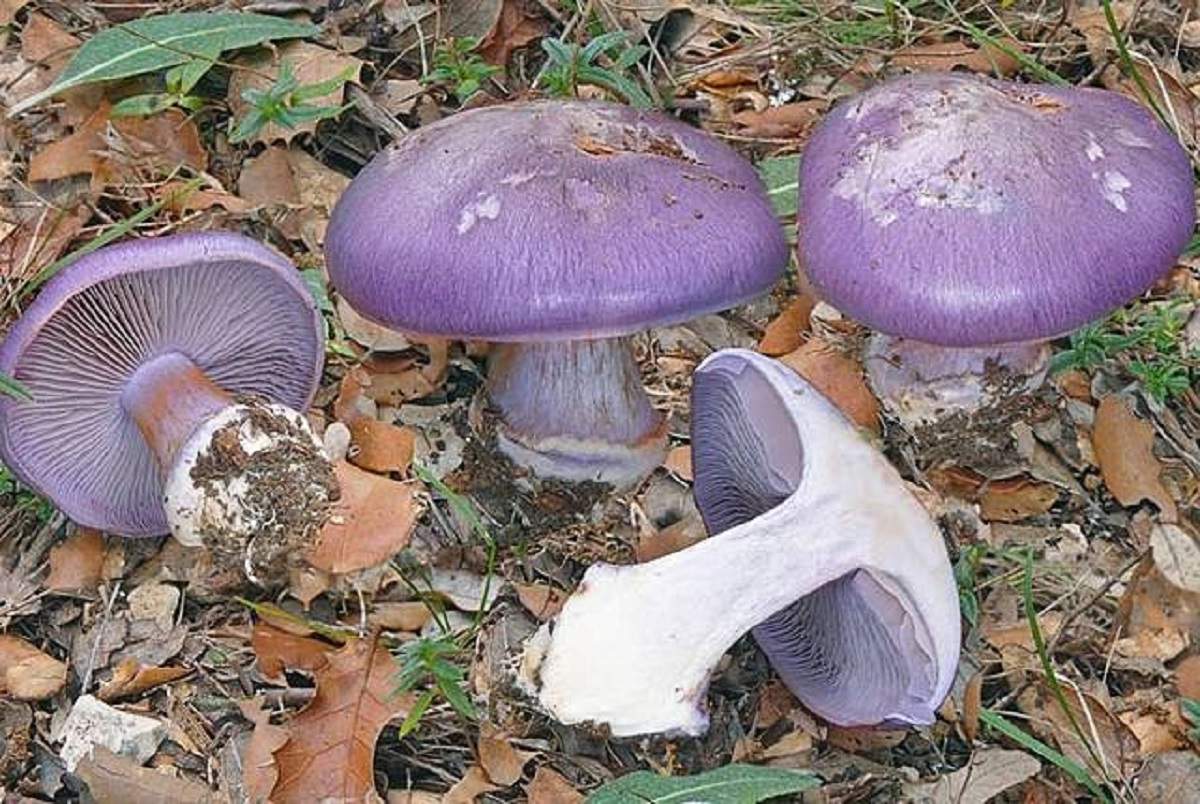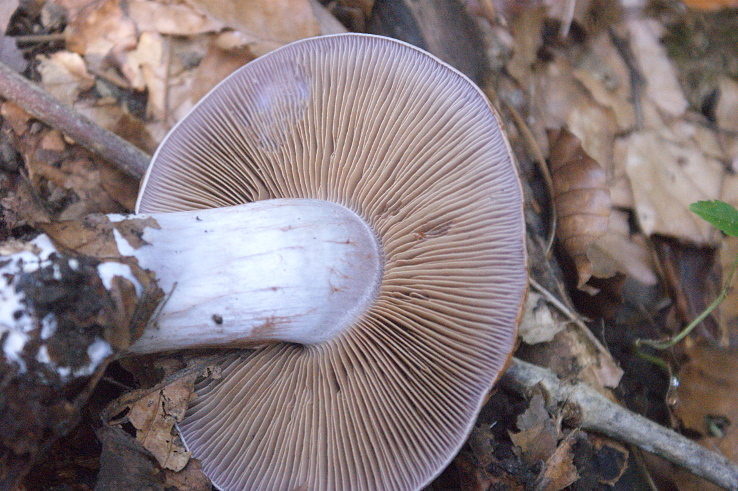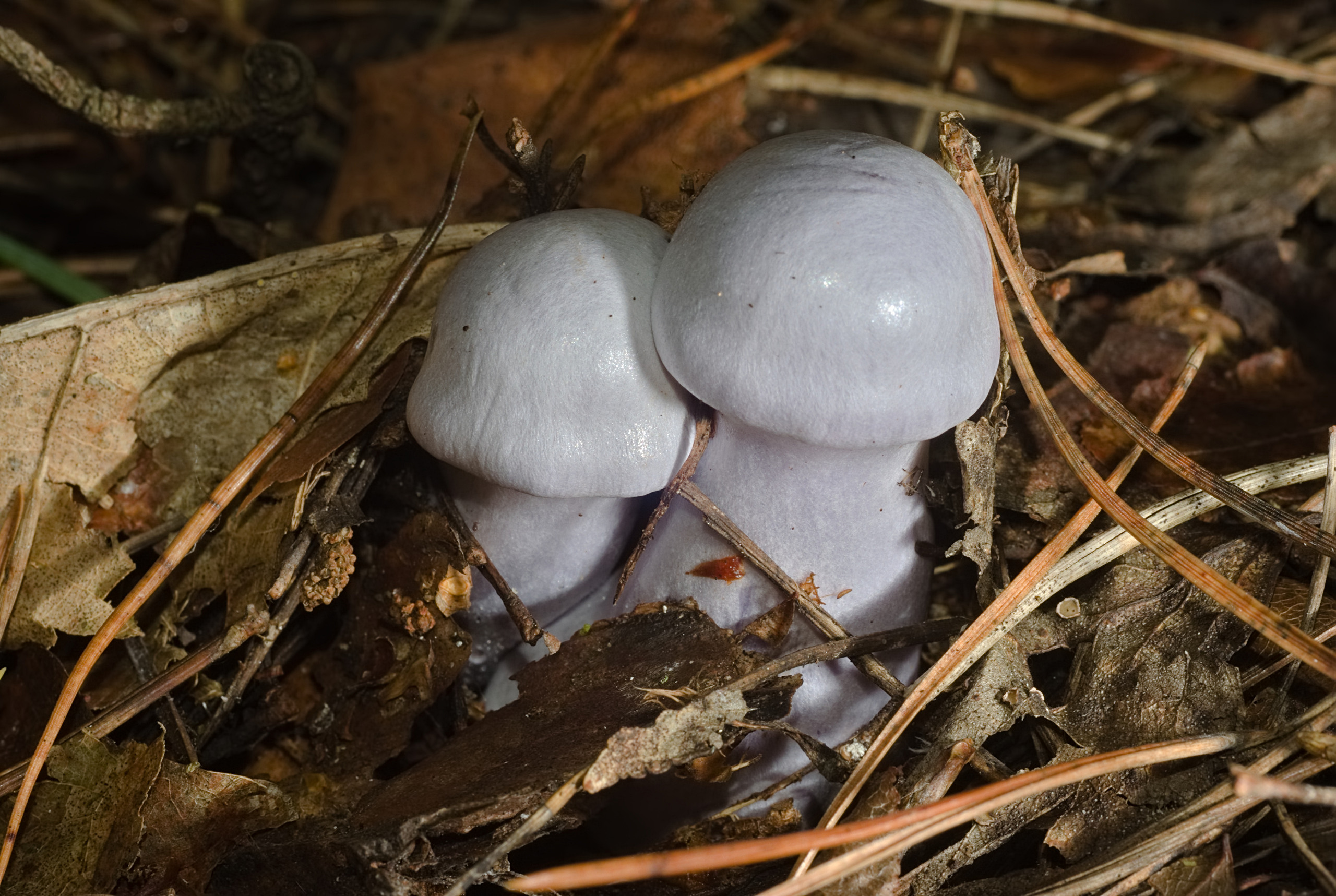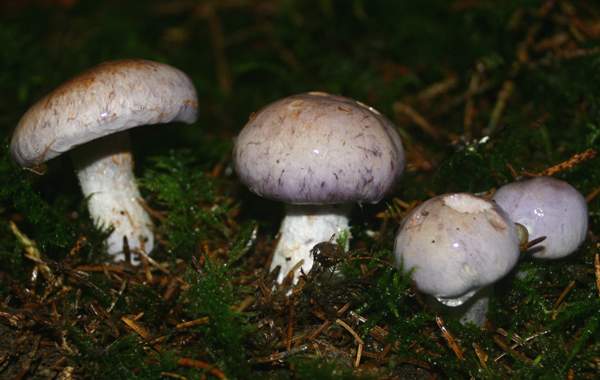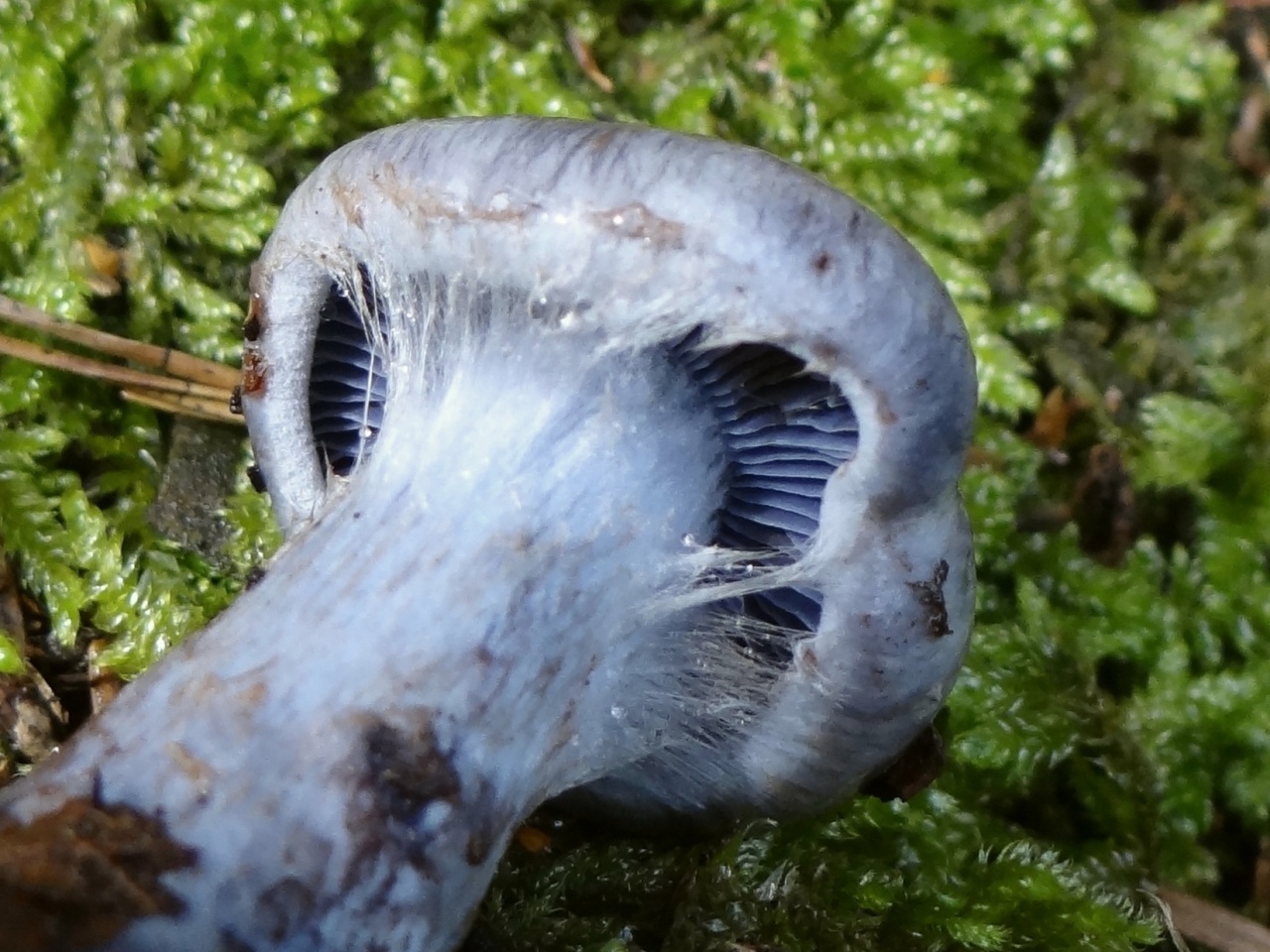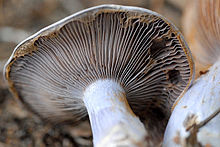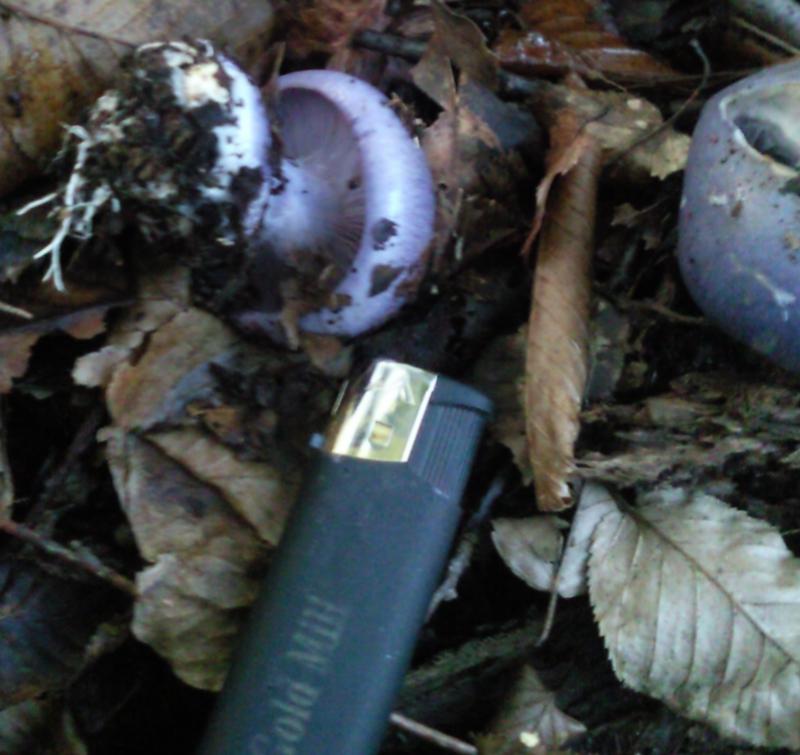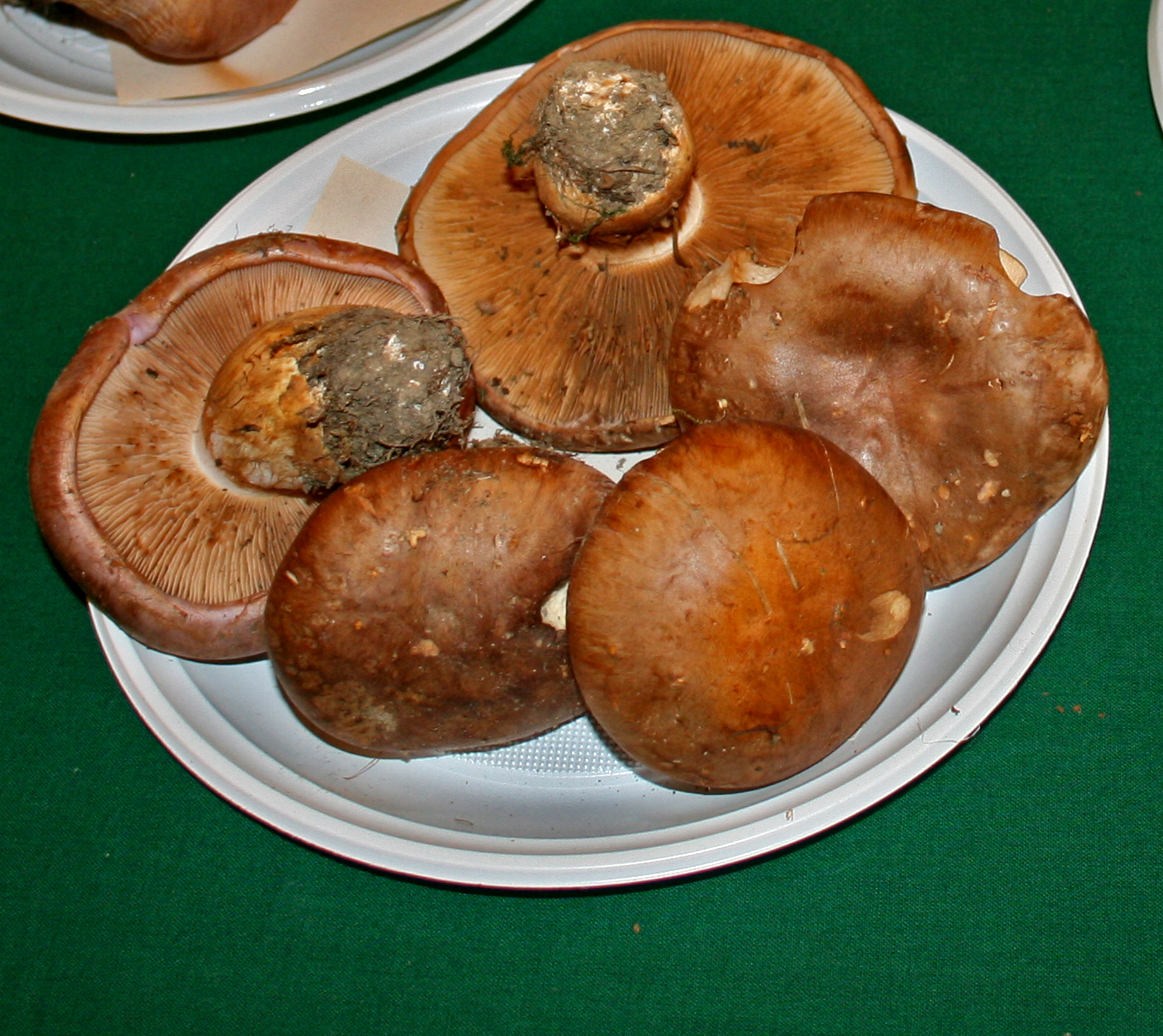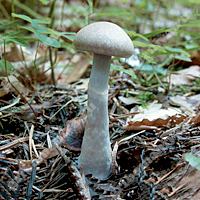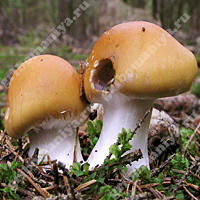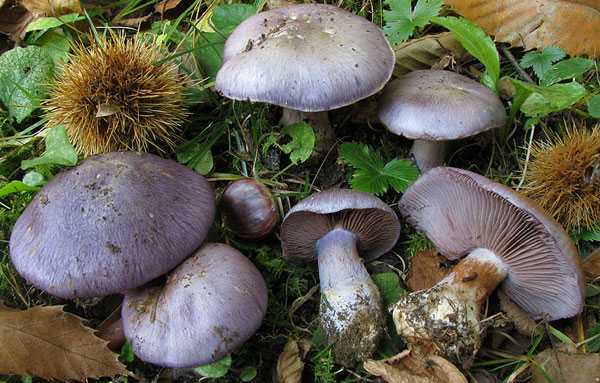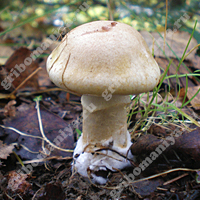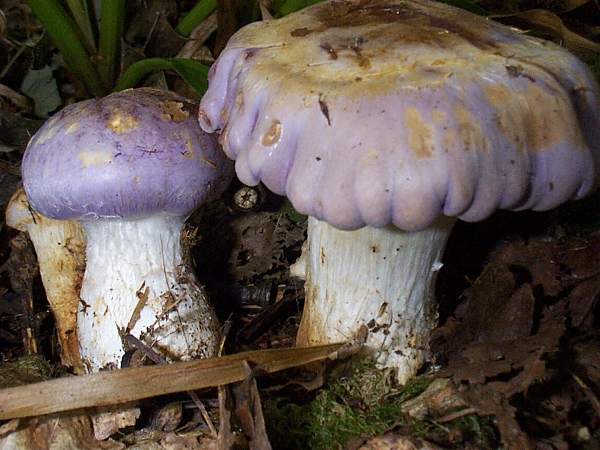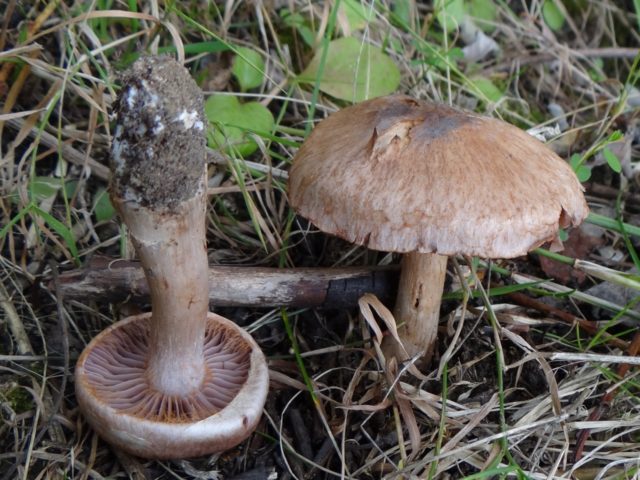Similar species and how to distinguish from them
The gray-blue webcap has a striking resemblance to a certain group of mushrooms. For example, it has a lot in common with the conditionally edible watery blue (Cortinarius cumatilis) - for a long time these two species were even combined into one. But the latter is distinguished by the uniformly gray-blue skin of the cap, and also does not have a private veil and thickening in the lower part of the leg.
May's webcap (Cortinarius mairei), which has white plates, is also similar to Cortinarius caerulescens. And you can distinguish the hero of the article from the webcap Terpsichores (Cortinarius terpsichores) by a more uniform color of the cap. Cortinarius cyaneus and Cortinarius volvatus have some similarities with blue. The first is distinguished by the remnants of a bedspread on a darker cap and radially located fibers on it. And the second has a more modest size and dark blue color. Sometimes blue can be confused with a white-purple spider web (Cortinarius alboviolaceus), which has a white-purple cap, and its surface is smooth and silky.
Webcap bright blue Cortinarius eucaeruleus
Last page update -
class Basidiomycetes -> order Cortinariales -> family Cortinariaceae -> genus Cortinarius

The site needs photos of this mushroom
Description of the mushroom by Irina Ukhanova and Alexey Myasnikov To find out the meaning of a color-coded term, move the mouse cursor over it
| Hat Cap | A hat with a diameter of 40-110 mm, at first from hemispherical to convex, then prostrate; depending on the weather, its surface is sticky, slimy or dry, fibrous, not scaly; the color is bright purple-blue, often with ocher or yellowish spots as it ripens, especially in the center. |
| Gills records | Frequent or not very violet in young fruiting bodies, becoming violet-gray as they mature. |
| Spore print Spore print | Rusty brown |
| Micromorphology Micromorphology | Spores 9.5-12 x 6-7 microns, ellipsoidal, densely warty, without germ pores. Cystids other than the surrounding cells are rare. |
| Stem leg | Sizes 40-80x10-20 mm, cylindrical or clavate, with tuberous thickening, with dry surface, pale bluish in young specimens, then grayish-white, sometimes ocher-yellowish in old age. Cortina is violet-bluish. |
| Flesh pulp | Grayish-white or violet-gray, dense, fibrous in the stem, mild or absent taste, spicy smell, reminiscent of Scleroderma mushrooms. |
| Habitat habitat | In deciduous forests on calcareous soils, forming mycorrhiza with oak, hornbeam, linden, hazel, less often with beech, usually in small groups. |
| Fruiting Calendar Calendar | Autumn |
| Edibility Edibility |
Does not represent nutritional value, due to the rarity, it is better to refrain from collecting
Other photographs of this mushroom in the WEB
Search for pictures of the fungus on the Internet as Cortinarius eucaeruleus
Remarks
Rare species Rare in the zone of mixed coniferous-deciduous forests and very rare in the zone of deciduous forests. On the Red Lists of Denmark and Norway as critically endangered (CR).
Similar species
It is very similar to the Terpsichore spider web, Cortinarius terpsichores, which differs in smaller spore sizes, can form mycorrhiza with pine and broadleaf species. It can also be confused with the bluish cobweb Cortinarius caerulescens, which has a paler coloration and, as a rule, remains of white or yellowish velum in the center of the cap and smaller spores.
Links to the Informes Bright blue webcap (Cortinarius eucaeruleus) is mentioned in reports on the site: -> Etymology Etymology
The generic name Cortinarius is derived from the Latin cortina - veil, veil, using the final element -arius, with the meaning of a property or belonging; the epithet eucaeruleus is derived from the Latin caeruleus, a, um, blue, blue, dark green, the prefix ?? - (eu-), in adjectives and adverbs with the meaning of amplification.
Literature References
The appearance of a gray-blue spider web
A gray-blue webcap is a large mushroom, consisting of a leg and a cap, with a lamellar hymenophore.There is a residual blanket on the surface of the mushroom. The size of the cap of adult specimens is 5-10 centimeters.
In young spider webs, the shape of the cap is hemispherical, and over time it changes to flat. The cap is slimy to the touch; when it dries, it becomes fibrous. The color of the caps at a young age is bluish, over time it becomes light ocher, but a bluish border remains along the edge.

The fungal hymenophore is lamellar. The plates are flat, adherent to the stem. In young spider webs, the plates, like the cap, are bluish in color, and with age they turn brown.
The length of the leg reaches 4-6 centimeters, and the diameter ranges from 1.2 to 2.5 cm. There is a tuberous thickening at the base of the leg. The entire surface of the stem is purple, and its lower part is ocher-yellow.
Mushroom pulp is gray-blue in color. Its taste is insipid, and the smell is unpleasant. Rusty brown spore powder. Spores are almond-shaped, with a warty surface.
Areas of growth of gray-blue spiderwebs
These mushrooms are plentiful in the European continent and North America. Gray-blue cobwebs settle in large colonies. They grow in deciduous and mixed forests.

Blue cobwebs form mycorrhiza with many deciduous trees, such as beeches and oaks. On the territory of our country, blue-gray cobwebs grow only in the Primorsky Territory.
The edibility of blue spiderwebs
Although blue-gray spiderwebs are rare and rare, they are known to be edible and can be safely harvested and cooked.
Other mushrooms of this genus
Anomalous webcap - an inedible member of the family. The shape of the cap is initially convex, and in maturity it becomes flat. It is smooth, dry and silky to the touch. Its color is grayish-brown with a bluish-purple tint, but gradually it becomes reddish-brown. The length of the leg reaches 7-10 centimeters, its shape is cylindrical, it is whitish in color with a lilac tint.

Anomalous spider webs grow in small groups, they can also occur singly. They are found in the ground or on a litter of leaves and needles. Abnormal spider webs bear fruit from August to September. They grow in Norway, Bulgaria, Germany, France, and other European countries, as well as in the USA and Morocco.
Webcap white and purple - conditionally edible mushroom. The size of the cap is 4-8 centimeters, its shape is rounded-bell-shaped or convex-prostrate. The surface is shiny, silky, yellow-brown in color, may fade to an off-white tone. The length of the leg reaches 10 centimeters, and the thickness is 1-2 centimeters. Its shape is clavate, the lower part is mucous, lilac in color.
White-purple cobwebs are found from August to September. They grow in mixed, deciduous and coniferous forests, adjacent to oaks and birches. Prefer moist soil. They live singly or in small groups. White-purple cobwebs rarely come across.

Primary processing and preparation
The hero of the article is a little-known mushroom, which is considered conditionally edible and is ranked in category IV. You can serve a gray-blue cobweb to the table by frying. But remember that the mushroom must be boiled for 25 minutes before this. It is also dried or pickled - in this case, it turns black.
This mushroom is quite rare, and not every mushroom picker will be lucky enough to find it. But, nevertheless, if you find a blue spider web, you can safely put it in the basket. Just first, make sure it's really him. If there is even a slight doubt about the belonging of a mushroom to a particular species, it is better to leave it to grow further in the forest.
Description
Large lamellar cap mushroom with a cobweb blanket. The cap of adult mushrooms reaches 5-10 cm in diameter, in young mushrooms it is hemispherical, then opens to convex and flat, slimy, fibrous when dry. The color of young mushrooms is blue, then it becomes light = ocher, along the edge with a persistent bluish tint.The plates of the hymenophore, adhered to the stalk with a notch, are bluish in young fruiting bodies, turn brown with age.
The pulp is grayish-bluish, with a bland taste and an unpleasant odor.
The leg reaches 4-6 cm in length and 1.2-2.5 cm in thickness, with a noticeable tuberous thickening at the base, with a bluish-violet, at the base - an ocher-yellow surface.
Rusty brown spore print. Spores 8-12 × 5-6.5 µm, almond-shaped, with a warty surface.
Little known edible mushroom.
Similar species
- Cortinarius mairei (M.M. Moser) M.M. Moser, 1967 - The Mayor's Webcap - differs in whitish plates.
- Cortinarius cyaneus (Bres.) M.M. Moser, 1967 and Cortinarius terpsichores Melot, 1989 - are distinguished by a darker coloration, radial fibrous surface of the cap and usually disappearing remnants of the coverlet on the cap.
- Cortinarius cumatilis Fr., 1838 - Watery-blue webcap - differs in a bluish-gray, more uniformly colored cap, the absence of pronounced remnants of the bedspread and tuberous thickening.
- Cortinarius volvatus A.H.Sm., 1939 - is much smaller, always dark blue, growing under conifers.
Spring webcap (Cortinarius vernus)
Description
A hat with a diameter of 2-6 (up to  cm, bell-shaped in youth, then prostrate with a lowered edge and a (usually pointed) tubercle, then flat-prostrate with a wavy edge and a little pronounced tubercle (it does not always survive to this type). The edges of the cap are smooth or wavy, often torn. The color is brown, dark brown, dark red-brown, black-brown, there may be a slightly purple tint, it may be lighter towards the edges, with a gray tint, it may be with a gray rim along the edge. The surface of the cap is smooth, radially fibrous, silky fibers, not always pronounced. Cobweb cover, light, breaks very early. The remains of the veil on the stem are light or reddish, not always noticeable.
cm, bell-shaped in youth, then prostrate with a lowered edge and a (usually pointed) tubercle, then flat-prostrate with a wavy edge and a little pronounced tubercle (it does not always survive to this type). The edges of the cap are smooth or wavy, often torn. The color is brown, dark brown, dark red-brown, black-brown, there may be a slightly purple tint, it may be lighter towards the edges, with a gray tint, it may be with a gray rim along the edge. The surface of the cap is smooth, radially fibrous, silky fibers, not always pronounced. Cobweb cover, light, breaks very early. The remains of the veil on the stem are light or reddish, not always noticeable.
The pulp is brownish-whitish, brownish-grayish, lilac tint at the base of the leg, different sources consider it to be from thin to rather thick, in general, average, like all telamonias. The smell and taste are not pronounced, according to different opinions, from flour to sweetish. The plates are not frequent, from adherent to the tooth and to slightly descending, ocher-brown, gray-brown, with a slight lilac shade or without, uneven, sinuous. After maturation, the spores are rusty brown.
Spore powder, rusty-brown. The spores are almost spherical, slightly elliptical, strongly warty, prickly, 7-9 x 5-7 μm, not amyloid. Leg 3-10 (up to 13) cm high, 0.3-1 cm in diameter, cylindrical, underneath may be slightly clavate, brownish , grayish, longitudinally fibrous, silky fibers, possibly redness at the bottom.
Habitat
Inhabits broad-leaved, spruce and mixed (with broad-leaved trees, or spruce) forests, parks, fallen leaves or needles, moss, grass, glades, roads, paths, from April to June.
Similar species
Bright red webcap (Cortinarius erythrinus) - Some (British) sources consider it even synonymous with the spring webcap, but at the moment (2017) this is not a generally accepted opinion. The view, indeed, is very similar in appearance, the only difference is in red, purple tones in the plates, nothing red in the spring cobweb is not even close, except for the possible reddening of the base of the leg. this, too, for now, just their opinion. The leg of this spider web is dark brown, turns black with age. This species is a mycorrhiza-forming, and does not occur in the absence of trees. Chestnut spiderweed (Cortinarius castaneus) - A similar species, but grows in late summer and autumn, does not overlap with spring in time.
Cinnamon webcap
The webcap is dark brown;
Cinnamon spiderweb (Cortinarius cinnamomeus) is a type of mushroom belonging to the Spiderweb family, the Spiderweb genus.This mushroom is also called brown spider web, or dark brown spider web.
The brown webcap is also called the species Cortinarius brunneus (dark brown webcap), which is not related to this.
External description
The cinnamon webcap has a cap with a diameter of 2-4 cm, characterized by a hemispherical convex shape. Over time, the cap becomes open. In its central part there is a noticeable obtuse tubercle. The surface of the cap is dry to the touch, fibrous in structure, yellowish brownish brown or yellowish olive brown in color.
The mushroom stem is characterized by a cylindrical shape, initially well filled on the inside, but gradually becomes hollow. In girth, it is 0.3-0.6 cm, and in length it can vary from 2 to 8 cm. The color of the leg is yellowish-brown, lightening towards the base. The pulp of the mushroom has a yellow tint, sometimes turning into olive, it does not have a strong smell and taste.
The fungal hymenophore is represented by the lamellar type, consists of adherent yellow plates, gradually becoming brownish-yellow. In color, the plates are similar to a mushroom cap. They are thin in structure, often located.
Season and habitat
The cinnamon spider web begins to bear fruit in late summer and continues to harvest throughout September. Grows in deciduous and coniferous forests, widespread in the boreal zones of North America and Eurasia. Occurs in groups and singly.
Edibility
The nutritional properties of this type of mushroom are not fully understood. The unpleasant taste of the cinnamon spiderweb pulp makes it unfit for human consumption. This mushroom has several related species, which differ in their poisonousness. However, no poisonous substances were found in the cinnamon spider web; it is absolutely safe for human health.
Similar types and differences from them
One of the types of mushrooms similar to the cinnamon spider web is the saffron spider web. Their main difference from each other is the color of the hymenophore plates in young fruit chalk. In cinnamon cobweb, the plates have rich orange hues, and in saffron, the color of the plates tends to be more yellow. Sometimes there is confusion with the name of the cinnamon spider web. This term is often called a dark-brown spider web (Cortinarius brunneus), which is not even one of the species related to the described spider web.
An interesting fact is that the cinnamon spider web has the properties of dyeing materials. For example, with the help of its juice, you can easily dye wool in a rich burgundy red.
Description of the mushroom
The common webcap, called in Latin Cortinarius trivialis, belongs to the family of Webcaps (or Cortinaria) and the genus Webcaps (agaric order). It is popularly known as Pribolotnik, as it grows mainly in wet areas. It acquired its name thanks to a kind of cobweb blanket, reminiscent of a veil-like film, which connects the edges of the cap with the leg. And the epithet "ordinary" symbolizes the classic, usual structure of the fruiting body and inexpressive color.
The cap of the mushroom reaches a diameter of 3 to 8 cm. In immature representatives of the species, it has a hemispherical, rounded-bell-shaped shape with curved edges. As the fungus grows, it becomes convex-outstretched with a wide, low tubercle in the center. At the same time, a small amount of mucus can be seen on the surface of the cap. The color varies from pale yellow or pale ocher with an olive tint to clay, honey brown and yellow brown. There are also fruiting bodies with a red-brown cap in the center and light edges.
The hymenophore (the lower part of the cap, on the surface of which there is a thin spore-bearing layer) is distinguished by wide, often located to each other, plates that grow together in the form of a tooth. In young mushrooms, this part has a yellow or whitish color, and in more mature ones, it is rusty brown or pale ocher.Also on the hymenophore, a barely noticeable cobweb cover of a whitish color with a mucous consistency is visible. The spore powder in the common spider web is yellowish-brown.
On the cut, the flesh of the mushroom is quite dense, ocher color (sometimes it acquires a light whitish tint), and closer to the base of the leg it becomes slightly brownish. The smell of the fruiting body is unpleasant, and the taste is inexpressive.
The leg of the common spider web is silky and dense. It has a cylindrical shape that tapers or sometimes widens towards the base. Its height is 5-10 cm, and its diameter is no more than 1-2 cm. In young representatives of the species, it is initially solid, and later becomes complete. The color of the leg is white, sometimes with a purple tint, brownish in the base area. The girdle on the stem resembles concentric fibers of yellow-brown and brown shades.

